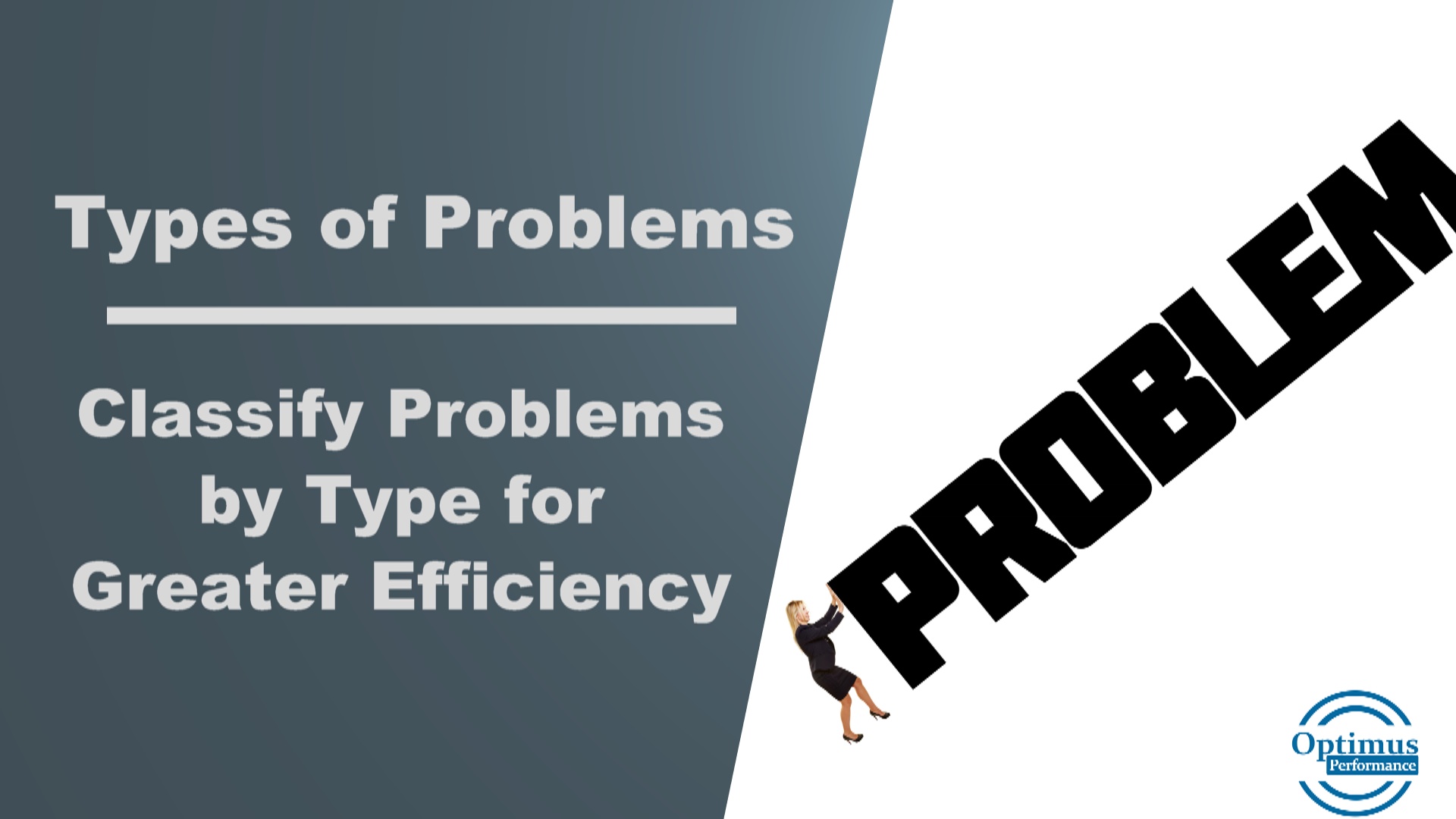Improve Problem Solving by Classifying by Type of Problem
Classifying problems by type can make you much more efficient in attacking the problems that are easiest to solve and would bring the highest return on investment of time and energy.
Everybody has problems and you can either be proactive in solving them or reactive. Proactive problem-solving is akin to continuous improvement, while being reactive puts you into firefighter mode and is very unproductive.
Being proactive on problem-solving creates improvement opportunities and when you address this as a team using brainstorming and other problem-solving techniques, it builds teamwork and a more engaged workforce.

Types of problems
Problems can be classified into three types.
Type I problems: these are problems that you and your team have full control and authority to solve and implement solutions. You do not need to present your solutions to management to get approval. These are the problems that you want to identify and deal with on a continuous basis. These are often referred to as low hanging fruit opportunities. An example would be setting procedures for specific jobs in the department.
Type II problems: these are problems that you and your team do not have full control and authority to solve and implement solutions. An example would be a manufacturing plant where your department is responsible for certain aspect of design or production. Some problems are caused by multiple departments and thus you can only recommend or participate with other departments in solution finding exercises.
Type III problems: these are problems that you and your team have no control or authority to solve and implement solutions. An example would be setting high level organizational policies.
The best way to determine the type of problem is to do a brainstorm with the team and list all the problems that team members perceive. Then go through the list and classify each problem as I, II or III.
Consult some of my other articles and videos on problem-solving techniques that you can use to find solutions to the problems.
Silent Brainstorming for Improved Team Problem Solving
Use Force Field Analysis to Identify Restrainers for a Key Problem or Goal
